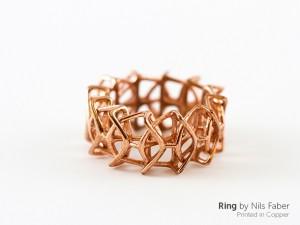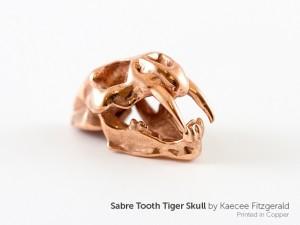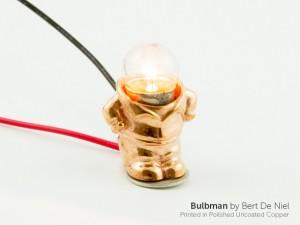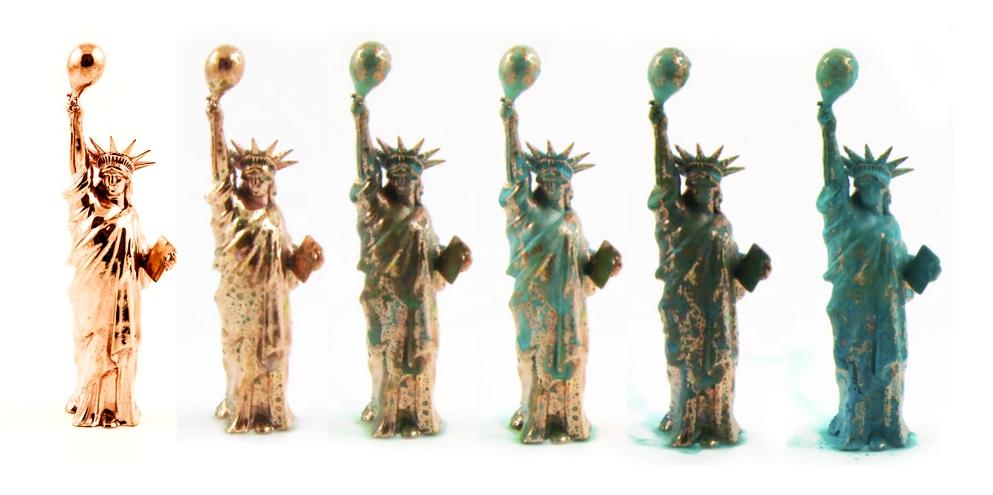 Copper has been in use for well over 10,000 years and it is one of the earliest metals that humanity used to create tools, art and jewelry. While other metals have come into favor since, copper never really stopped being used. It was inexpensive to mine, and even today it has a host of benefits and uses far beyond statues and coins. It is an excellent conductor of heat, specifically electricity, and is still used in cookware and electrical wiring today. It also has natural antibacterial properties that prevent the growth of microscopic organisms and is often used in hospitals to help prevent the spread of diseases.
Copper has been in use for well over 10,000 years and it is one of the earliest metals that humanity used to create tools, art and jewelry. While other metals have come into favor since, copper never really stopped being used. It was inexpensive to mine, and even today it has a host of benefits and uses far beyond statues and coins. It is an excellent conductor of heat, specifically electricity, and is still used in cookware and electrical wiring today. It also has natural antibacterial properties that prevent the growth of microscopic organisms and is often used in hospitals to help prevent the spread of diseases.
 Copper is also the nineteenth material that Belgian 3D printing services bureau i.materialise is now offering right alongside their other metallic offerings, gold, silver, raw steel, titanium, brass, bronze and stainless steel. Just like all of their metal offerings, copper can be used to create a wide variety of objects with complex geometries that are typically difficult or impossible using traditional copper casting methods. That means users can design their own copper jewelry, statues and because the i.materialise copper is completely real copper, users can even design their own customized medical devices to take advantage of its antibiofouling and antimicrobial properties.
Copper is also the nineteenth material that Belgian 3D printing services bureau i.materialise is now offering right alongside their other metallic offerings, gold, silver, raw steel, titanium, brass, bronze and stainless steel. Just like all of their metal offerings, copper can be used to create a wide variety of objects with complex geometries that are typically difficult or impossible using traditional copper casting methods. That means users can design their own copper jewelry, statues and because the i.materialise copper is completely real copper, users can even design their own customized medical devices to take advantage of its antibiofouling and antimicrobial properties.
 The copper objects 3D printed by i.materialise are made the same way that all of their precious metal objects are. Any prints made using gold, silver, bronze, brass and now copper are fabricated using a combination of 3D printing with wax, and a traditional lost wax casting process. First, a wax 3D printer is used to print out the design, then it is covered in a very fine plaster material that will retain the detail and desired surface texture. Once the plaster is dry, it is placed in an oven and baked until all of the wax has melted and burned away. The empty plaster cast is then filled with melted copper and cooled. Once the plaster is removed, the copper item will have any support structures or sprues removed and then simply polished to the desired finish.
The copper objects 3D printed by i.materialise are made the same way that all of their precious metal objects are. Any prints made using gold, silver, bronze, brass and now copper are fabricated using a combination of 3D printing with wax, and a traditional lost wax casting process. First, a wax 3D printer is used to print out the design, then it is covered in a very fine plaster material that will retain the detail and desired surface texture. Once the plaster is dry, it is placed in an oven and baked until all of the wax has melted and burned away. The empty plaster cast is then filled with melted copper and cooled. Once the plaster is removed, the copper item will have any support structures or sprues removed and then simply polished to the desired finish.
Here is a brief video from i.materialise showing off what types of applications their 3D printed copper is suitable for:
 The reddish gold color that is the natural finish of copper is quite beautiful–and it is very susceptible to tarnishing and oxidation. Copper objects will quickly acquire a greenish patina, especially when exposed to open air. The green copper patina is itself a beautiful feature to the material, and often one of the main reasons that copper is still used in artwork and statues. The oxidation is natural and impossible to stop, although it can be slowed down with the application of a clear polyurethane coating. The PU coating will also help prevent any scratches on the extremely soft metal’s polished surface. Copper objects that are PU coated and uncoated are indistinguishable from each other; only the slower rate of oxidation will differentiate them from each other.
The reddish gold color that is the natural finish of copper is quite beautiful–and it is very susceptible to tarnishing and oxidation. Copper objects will quickly acquire a greenish patina, especially when exposed to open air. The green copper patina is itself a beautiful feature to the material, and often one of the main reasons that copper is still used in artwork and statues. The oxidation is natural and impossible to stop, although it can be slowed down with the application of a clear polyurethane coating. The PU coating will also help prevent any scratches on the extremely soft metal’s polished surface. Copper objects that are PU coated and uncoated are indistinguishable from each other; only the slower rate of oxidation will differentiate them from each other.
The design specifications for copper are exactly the same as the specifications for gold, silver, bronze, or brass materials, with the same restrictions. There is a required minimum wall thickness of 0.5 mm, minimum detail of 0.3 mm, and a maximum printing size of 3.46 x 2.48 x 4.92 inches (88 x 63 x 125 mm). So large-scale objects are out of the question, but anything jewelry sized, or that can be held in the palm of your hand, is possible.
If you’re not sure that your model can be 3D printed in copper check out i.materialise’s Copper Design Guide for detailed specifics and requirements. Also take a look at their Copper Materials Page for a material overview, color and finishing options and property specifications. And you can compare it to all of the printing options available by i.materialise on their Materials Page.
Have you tested out this new material? Let us know in the i.materialise Copper forum thread on 3DPB.com.
Subscribe to Our Email Newsletter
Stay up-to-date on all the latest news from the 3D printing industry and receive information and offers from third party vendors.
You May Also Like
Gorilla Sports GE’s First 3D Printed Titanium Cast
How do you help a gorilla with a broken arm? Sounds like the start of a bad joke a zookeeper might tell, but it’s an actual dilemma recently faced by...
Nylon 3D Printed Parts Made More Functional with Coatings & Colors
Parts 3D printed from polyamide (PA, Nylon) 12 using powder bed fusion (PBF) are a mainstay in the additive manufacturing (AM) industry. While post-finishing processes have improved the porosity of...
$25M to Back Sintavia’s Largest Expansion of Metal 3D Printing Capacity Since 2019
Sintavia, the digital manufacturing company specializing in mission-critical parts for strategic sectors, announced a $25 million investment to increase its production capacity, the largest expansion to its operations since 2019....
Velo3D Initiates Public Offering in a Bid to Strengthen Financial Foundations and Drive Future Growth
Velo3D (NYSE: VLD) has been among a number of publicly traded 3D printing firms that have attempted to weather the current macroeconomic climate. After posting a challenging financial report for 2023,...
































